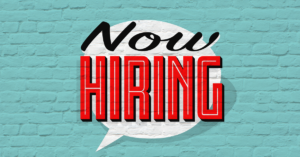
You only get one chance to make a first impression, and that’s exactly what a cover letter is meant to do in the context of your job search. Your cover letter is the very first interaction you’ll have with the gatekeeper at organizations where you’re applying, so it’s important to make sure it’s as strong and polished as possible.
Here, we’ll show you how to write a cover letter that will help you stand out among other candidates and make a strong case for landing an interview. We’ll also share an effective sample cover letter you can use as a guideline to write your own for your job application.
Step by Step on How to Create a Cover Letter
Step 1: Introduce yourself
A great cover letter introduction cuts right to the chase of who you are and why you’re a fit for the job.
Remember, the clock is ticking on your first impression. Don’t waste time stating the obvious or saying the same bland thing a hundred other candidates are going to say, like ‘I’m John Smith and I’m applying for the role of head candlestick salesman at Acme Candle Company.’
Instead, dive right in and make a statement that sets you apart. You might begin, ‘My name is John Smith and for the last three years, I’ve been the number one candlestick salesperson in my division with gross sales totaling more than $5M.’
Boom—you’re off and running. If you were referred by someone, your introduction is a great place to include this potentially important detail, as well.
Step 2: Tie your experience to the job you’re applying for
The meat of your cover letter should be focused on tying your experience to the specific requirements of the job to which you’re applying. Too many candidates spend it regurgitating their past work experience, but that’s what a resume is for.
Your cover letter is not simply a narrative version of your resume. Rather, it’s a chance to show the hiring manager how your skills and experience empower you to excel in their open position and solve their pain points. This is why a truly effective cover letter is unique for every job you apply to.
For example, let’s say the position calls for you to juggle multiple responsibilities with shifting deadlines. You might say, ‘In my role as a candlestick sales coordinator, I prioritized orders from dozens of client accounts based on volume and timeline to maintain a manageable production schedule.’
Rather than simply saying you’re organized and can meet deadlines, you’re showing how you’ve excelled at these things in the past.
Step 3: Share noteworthy wins
We often say that your cover letter is like your professional highlight reel on your job application.
If you had to pick one or two moments where you really shined at what you do, what would they be? Find a way to work these career wins into your cover letter. To differentiate from what’s on your resume, think of this part as if you were telling the story of your win to a friend or colleague.
If you’re not used to positioning your achievements this way or if you’re in a field where tangible “wins” and “losses” aren’t as common (say, academia versus marketing), this can be tricky. However, that’s why it’s all the more important to do.
To help identify your cover-letter-worthy wins, think about impact. What have you done that benefited your organization, your clients, or the public the most? Here are a few examples to get your creative juices flowing:
- Did something that helped your company save or make more money
- Led a training to help your colleagues get better at their jobs
- Solved a problem for a customer
- Made your organization look good in the public eye
If there’s one thing we can’t emphasize enough, it’s to use specifics rather than generalizations. Saying you improved customer satisfaction ratings by 26% is a whole lot more impactful than simply saying you improved customer satisfaction ratings. Don’t leave the recruiter or hiring manager wondering. Tell them in plain detail how you made a positive impact.
In this part of your cover letter, you may choose to break from the typical paragraph format in favor of bullet points.
Step 4: End on a high note
Once you’ve made your case using the compelling details we discussed above, your closing can be as simple as a polite ‘Thank you for your consideration’ or ‘I look forward to speaking with you further.’
If you want to end with a bit more flair, though, you might use your closing as an opportunity to briefly touch upon why you want the job or what drew you to the organization. For example, ‘I greatly admire Acme Candle Company’s commitment to becoming the number one provider of sustainably sourced candlesticks, and I would welcome the opportunity to join your team.’
Leave your closing open-ended. In other words, the ball is in their court. Don’t make statements like ‘I will call you to follow up’ or ‘please contact me to schedule an interview.’ These not only come across as presumptuous but show that you’re out of touch with professional norms on how the application process works.
Cover Letter Mistakes to Avoid
Now that we’ve covered what you should do to write an effective cover letter, let’s discuss a few things you shouldn’t do.
Failure to customize
We’ve said it already, but it bears repeating: your cover letter should be tailored to the position you’re applying for. A generic cover letter that directs the reader to your resume isn’t worth any more than the sheet of paper it’s printed on.
Read the job description carefully and find ways to connect your unique skills and work experience to the qualities they’re looking for in a candidate and the duties you’ll be performing.
Taking the wrong tone
A cruise ship is a different work environment than a law firm. The company culture, professional expectations, and general atmosphere are going to be wildly different. It stands to reason, then, that the tone of your cover letter would be different for a job with each of these two organizations, as well.
When crafting your cover letter, it’s important that the tone A) sounds like you and B) is appropriate for the company. If it’s too casual, you’ll sound unprofessional. If it’s too formal, you’ll sound like you lack an understanding of the organization.
To get a feel for the right tone, look at the language used on the company’s website and social media channels. When in doubt, err on the side of formality.
Oversharing
90% of the time, you should keep the content of your cover letter purely professional. Your prospective employer doesn’t need to know that you’re looking for a job in the same city as your boyfriend or that you have a collection of unique historic memorabilia.
The exception to this would be when personal details are directly relevant to the role or the company, for example, if you have prior experience volunteering in the field where you’re now job searching or if you saw the CEO speak at an event ten years ago and have been an admirer of the company ever since.
Failing to proofread
Before you send your cover letter off into the hands of a recruiter or your prospective future boss, proofread it. Then, if at all possible, ask an eagle-eyed friend to do the same.
Running it through spellcheck is a must. Newer apps like Grammarly and Hemingway are also great options for catching grammatical and contextual mistakes that your standard word processor can miss.
Effective Cover Letter Template
Dear [Hiring Manager Name],
[PARAGRAPH 1: Introduction]
Begin with your name and a detail or two about who you are.
[PARAGRAPH 2: Tie skills/work experience to job description]
Show the reader how your unique experience translates into success in their position. Cite responsibilities and/or qualities you’ve sourced directly from their job description. Don’t simply repeat what’s in your resume.
[PARAGRAPH 3: Highlight impactful wins]
Use specific details to demonstrate how you made a positive impact on your company, its customers or the public. Bullet points may work well here.
[PARAGRAPH 4: Closing]
End with a polite and concise closing. If you choose to, you might end by summarizing why you want to work for the company.
Sincerely,
[Your Name]
Take the Next Step with 4 Corner Resources
At 4 Corner Resources, our headhunters are passionate about helping match candidates with companies where they can learn, grow and excel. We bring more than a decade of experience connecting recognized leaders in technology, finance, marketing, legal, and healthcare with the top professionals in their respective fields.
We’re more than just your average recruiting firm. In addition to our established industry relationships, we offer our clients access to proprietary sourcing and hiring tools that help you hire better, faster and at a lower cost.
Our clients always come first; we pride ourselves on having the best customer response rates in the industry without sacrificing the quality of service. If you’re ready to take the next step in your job search or need expert recruiting assistance to fill your open position, contact us today.


